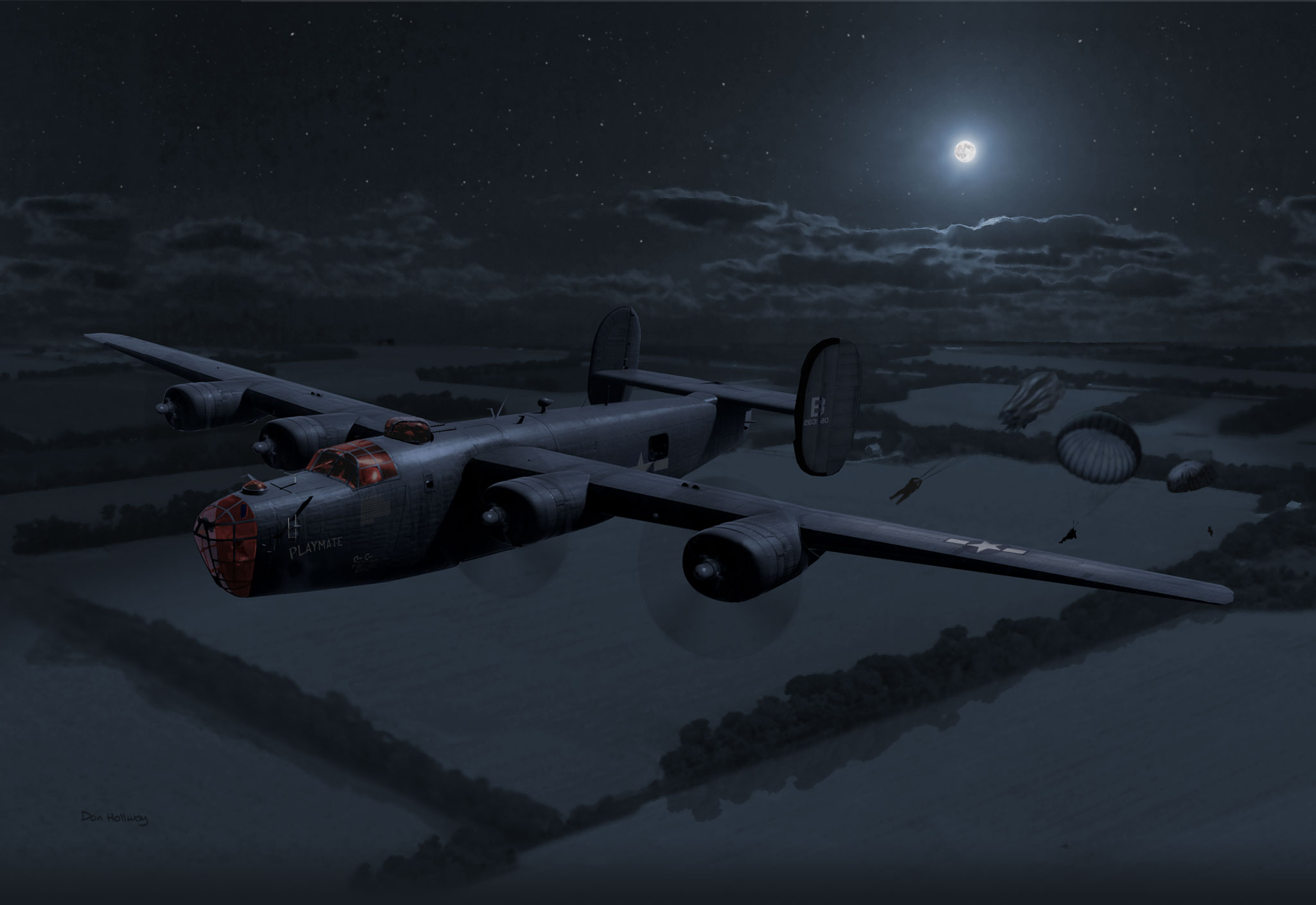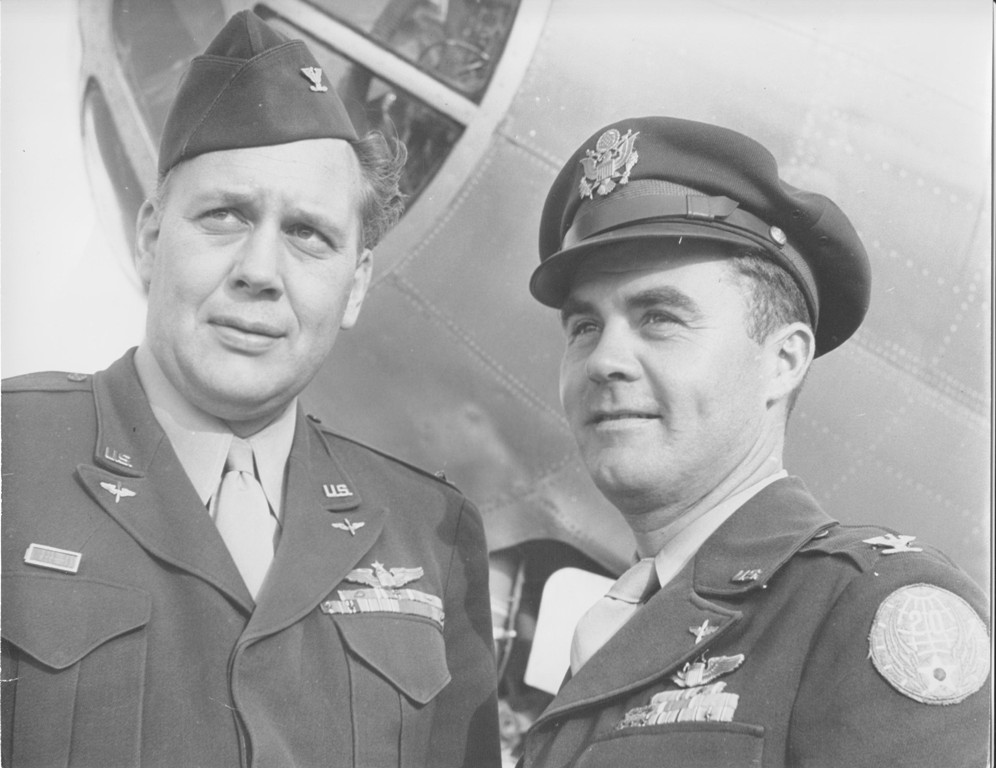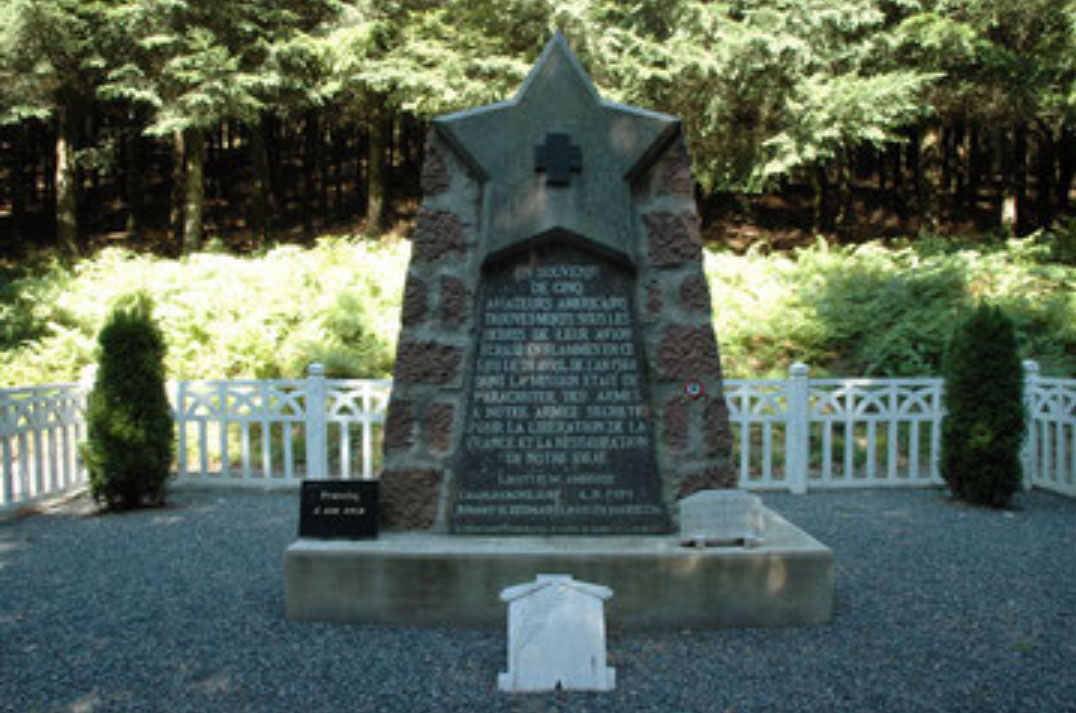



|

492nd Bomb Group B-24 Liberator #42-51211 Miss Fitts takes off from Harrington. Some Liberators received extended nose greenhouses for night observation. In May 1944, not long after their arrival in England, B-24 pilot Capt. George Johnson and crews of the 788th Bombardment Squadron learned they could promptly forget how to carpet-bomb cities from tight formations at high altitude.Lt. Col. Robert W. Fish briefed them, “You are going to learn to fly your airplane 400 feet above the ground—10 miles per hour above stalling. And in addition you’re going to do this at night and you’re going to do it as a single ship mission. I’m going to give you five minutes to think about it. Now, if you don’t want to be a part of this all you have to do is to get up and walk out. You’ll go back to your group and nothing will be said and it won’t reflect against your record.” Low, slow, and alone, over enemy territory, at night? “I could sense that my crew wasn’t too fond of the idea,” remembered Johnson, “and you could sense that the others felt pretty much the same way but I suppose this was one of those times when the word ‘chicken’ comes into play.” Nobody rose to leave, and Fish drew aside a curtain revealing a map of Occupied Europe, marked with red circles.  In August 1944 Carpetbagger commander Col. Clifford Heflin (left) took over the 216th Army Air Forces Base Unit, testing B-29 bombers and crews for Col. Paul Tibbets’ 509th Composite Group, which dropped atomic bombs on Japan. Had a third bomb been necessary, Heflin was slated to fly the mission “Now, these are the locations of the Underground Groups, the Maquis, the French Force of the Interior, the Partisans,” he told them. “These are the people you are going to be working with. You’ll be going in at night—by yourself—delivering supplies to the underground and you'll be dropping agents.” Fish himself had little experience with daylight bombing. Up to a few months earlier he’d hunted U-boats in the Bay of Biscay as part of the 22nd Anti-Submarine Squadron. But with the US Navy now flying its own Liberator subhunters, the 22nd needed a new line of work. That October, at RAF Bovingdon west of London, Fish and his commanding officer Col. Clifford Heflin had met with officers of the Royal Air Force, US VIII Air Force Bomber Command, and Office of Strategic Services (predecessor of the CIA). Under the codename “Operation Carpetbagger,” their B-24s would effectively become the air arm of the OSS. Though they also flew Douglas C-47s and A-26 Invaders (left) Boeing B-17s and British deHavilland Mosquitos (right), the Carpetbaggers’ workhorse remained the B-24D. Its efficient, high aspect-ratio Davis wing gave it long range, heavy payload and high speed, but made it a difficult handler at low speed. 
Consolidated B-24D #42-63980 Playmate , formerly Missouri Mauler Playmate was one of the oldest Carpetbagger aircraft, but actually the second Playmate. (The first, assigned to the 22nd Antisubmarine Squadron, crash-landed at Lands End Airbase after escaping German fighters, and was written off.) In November 1944 Playmate flew from Harrington to New Delhi, India, via Naples and Cairo, with 492ndBG and OSS personnel to investigate Carpetbagger operations in the China-Burma-India theater. Though a Carpetbagger operation in the CBI was thought necessary, it was decided to recruit units already in the East rather than bring an entire unit from the ETO. In January 1945 Playmate returned to England the way she came, a round trip of some 25,000 miles. In March 1945, two Carpetbagger Liberators and crews transferred to the 14th Air Force at Kunming, China, to help establish Carpetbagger units. Alterations for Carpetbagger work included: • Early aircraft painted allover black matte; later, gloss black underneath, with the upper surfaces left olive-drab. Standard black matte applied upper surfaces of aircraft arriving unpainted • Removal of waist and cheek guns • Blacked-out glass in waist windows, cheeks and under the nose • Flash hiders on the top- and tail-turret machineguns, flame dampers on engine exhausts • Blister in pilot's side window for improved downward visibility • Nose antennae for Rebecca airborne transceiver
• Toned-down side insignia, although tail ID codes remained bright • Removal of ball turret in belly to create “Joe hole” • Two strong points for parachute static lines installed at Joe-hole • Extraneous radio gear, armor, and high-altitude oxygen system removed • Red interior lighting to preserve night vision • American bomb shackles removed and replaced with British conversion shackles (supply containers were furnished by the British and used British suspension lugs) 
By the end of the war in Europe, the 801st/492nd had dropped some 4,500 tons of supplies and hundreds of personnel over enemy territory. 25 Liberators were shot down and eight more so badly damaged they were scrapped. The inscription on the monument to the lost crew of Worry Bird in St. Cyr-De-Valorges reads: “In memory of five American airmen found dead under the debris of their aircraft, shot down in flames at this place April 28, 1944, whose mission was the parachuting of arms to our secret army for the liberation of France and the restoration of our ideal.” It speaks to the service and sacrifice of all the Carpetbaggers. More from Don Hollway: Comment Box is loading comments...
|
